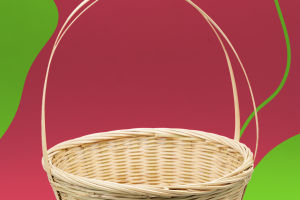Today we will discuss how to make an artificial bird nest box. Creating a suitable nesting site for birds can help to promote breeding and support the population of these beautiful creatures.
Bird nests can be constructed in various styles and textures, depending on the local conditions and materials available.
Wooden bird nest boxes are the most common type used. To make one, you will need to select the appropriate size for the species of bird you are hoping to attract, taking into account their nesting habits. It's best to use dried wood scraps that are about 2cm thick. Pine wood is a good choice as it is less likely to warp or deform over time.
The top of the nest box should have a slight slope and extend 2-3cm forward to provide adequate shade and shelter from the rain. The front wall or top cover of the nest box should be designed to open for easy inspection and cleaning.
Any gaps should be filled with putty or sticky mud to ensure the nest is secure. Finally, the exterior of the nest box can be painted with dark paint to prolong its life.
The hanging position of the nest box is crucial in determining its effectiveness. Several conditions should be met. Firstly, there should be sufficient food and water available in the local ecological environment. Secondly, the nest box should face south to maximize sunlight exposure and provide protection from the wind.
This orientation ensures that the nest is warm and dry, which is ideal for the development and survival of chicks. Thirdly, the nest box should be hung at a height of between 2.5m and 4.5m above the ground.
This is the optimal height for most bird species. Ideally, the nest boxes should be hung at least 1-2 months ahead of the local bird nesting time, preferably before winter or no later than February-March, as many birds begin selecting nesting sites during this period.
As humans continue to develop natural environments, suitable nesting sites for birds are becoming increasingly scarce. Providing artificial bird nests can help to mitigate this issue. Additionally, artificial nests can serve as a refuge for birds during the cold winter months.
According to reports from overseas, dozens of small birds have been observed huddling together in artificial bird nests to keep warm. Providing fixed food and water sources for birds at the same time as hanging the nest box can also benefit the breeding success of birds.
When constructing a bird's nest box, there are several important considerations to keep in mind. Firstly, ensure that the wood used is sufficiently dry and that the thickness is no less than 1.5cm to prevent cracking or deformation when nailing. Avoid using boards with seams, but if unavoidable, coat them with wood glue for added strength.
Applying a layer of clear oil to the outer walls of the nest box can extend its service life. Before painting, number the front wall, left and right walls, and bottom of the box for easy observation and recording from different directions. If multiple nest boxes are hung in a forested area, it is helpful to create a nest position map and regularly inspect and record the boxes' condition.
Creating artificial bird nest boxes can help to support bird populations and provide a safe and warm environment for them to breed.
By following the guidelines mentioned above, you can make a suitable bird nest box that meets the needs of various bird species. Remember to hang the nest box in an appropriate location and provide food and water for the birds to maximize the chances of breeding success.


